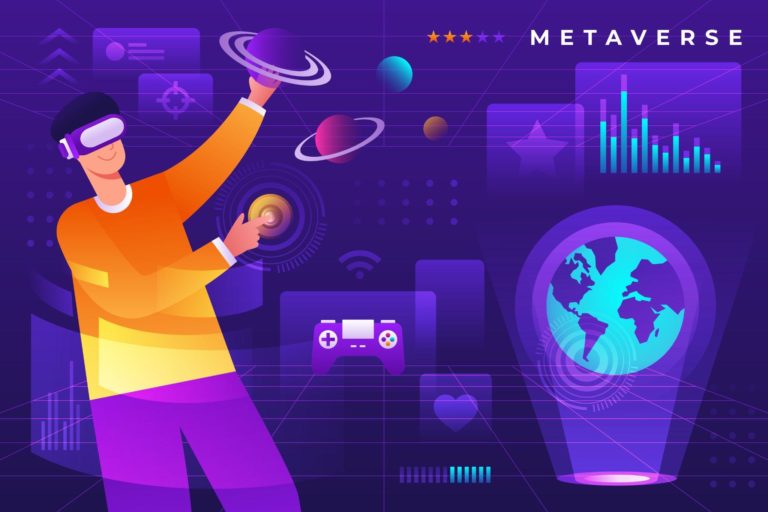Long gone are the days when the Human Resources department focused chiefly on recruiting talent. Today, it is much more. It has evolved into an invaluable resource that serves as the lifeline of a company’s workforce and growth.
What Is Strategic International Human Resource Management?
A cohesive, holistic plan designed by HR to manage its global human capital is termed a global Human Resource strategy.
Working hard with the management, HR aims to create a cohesive, holistic plan to manage its human capital that aligns with its philosophy and purpose. If done right, the HR strategies for planning for global organizations become a pivotal player in the growth and strength of an organization.
As crucial as it sounds, it isn’t a one plan fits all kind. Thus, we have created a step-by-step guide that encompasses proven practices to help you tailor a global human resource strategy for your company.
Steps In Designing A Global Human Resource Strategy
1. Setting Goals and Choosing Activities that Best Align with the Company’s Goals
Each company has a unique story and philosophy. The goals set must reflect the same.
Mission and vision shape goals
Goals decide where the company is headed towards. Strategies and activities direct how it is going to get there. Thus, goal setting is the first and foremost step in strategizing a global human resource plan.
Your goals must reflect on the following:
- Why your company exists?
- Who does it serve?
- Why does it do what it does?
- Set a long-term target towards which your global organization works.
- More definition through activities
The next step is to identify activities that best achieve the goals that lead to a successful business. These objectives must be achievable, short-term ones that inch towards the targets set.
Organizational structure in accordance with the goals
The organizational structure outlines how the planned activities are directed within, to fulfill the defined goals. Hence, the next step in a global Human Resource strategy is to frame a suitable global HR organizational structure.
The basic four types include:
- Functional (small to medium companies): The organization is split based on the departments (finance, marketing, events, etc.). Each department functions separately with a hierarchical structure, headed by the same person or group.
- Multidivisional (big companies): With several product line-ups, the company is split based on the product and the type. Each unit functions as a separate entity.
- Flatarchy (startups): There are very few or no hierarchical levels followed among the employees. It gives the employees more autonomy.
- Matrix: Employees work across departments and divisions. They report to more than one supervisor. For example, the same employee works as in presales as well as customer service.
A well-planned structure will include the roles and responsibilities at each level. It also determines the flow of information within the firm. As an HR, you must choose a structure and hierarchy that works best for the goals set, choose your right fit.
Deliver world-class employee experiences
2. Finding Talent
Once the roles and responsibilities are set, it becomes a tad easier to find the right minds that suit them. The best global HR strategy is to enable global hiring.
Global hiring
Hiring across borders without demographic and language barriers creates opportunities for the best talents worldwide.
However, this is easier said than done. Your global hiring strategy must also include plans to evade challenges posed in hiring talents across the world. The subsequent steps include such challenges and workarounds.
Hiring without a local entity
On a global scale, establishing local entities in each country to hire talents is an arduous process time-wise and finance-wise. Your plan must include hiring strategies with minimal expenditure and physical turmoil.
In such cases, you can take the help of several firms that work as an EOR (Employee on Record). These firms have local legal entities in various countries to assist other organizations in hiring local talent. Ideally, you would be parking your new hires in the EORs payroll on a paid basis. Thus, the legal ownership of the employee would be effectively on the EOR while you’d continue to manage their daily affairs. Using an EOR like Multiplier, you can hire without having to grind through the process of setting up local entities in each country.
Enhanced hiring practices
After identification of suitable talents, the next step is to hire them. This can be cumbersome especially, on a global scale, with virtual onboarding, multiple contracts, compliance, and laws in place.
You can employ enhanced HR tools available in the market to ease out this process. They include features to assist you in each step of the hiring, simplifying your process
After all, the best strategy is to simplify.
Compliance with local labor laws
Each country has a different set of laws for hiring and disbursing contracts. Your global HR strategy must be mindful to adhere to these laws. Also, they are regulated from time to time, and you need to ensure that you reflect those changes in your documents.
Involving PEOs (Professional Employer Organizations) to assist in keeping up with the changing laws and compliance declutters and vouches for a solid global HR strategy.
Employment contract
The onboarding process includes multiple contracts, document filing, and the like. Further, the contracts drafted differ based on type (full-time or contractors), roles, and location.
Using HR tools for onboarding and drafting required contracts will help you declutter the entire process.
3. Managing Employee Activities
Once the employees are successfully hired, the next step in HR strategies international is to manage their activities and payroll.
Management tools
Manually managing the everyday activity of employees is arduous and nearly impossible as the company grows. Thus, to overcome this, the next HR strategy is to design or employ tools to automate the process.
You must use or design a tool that includes all of the employees’ activities, irrespective of their roles, such as timesheets and logs, leave trackers, tasks list management, etc.
Payroll regulation
Another plan that must be in place is the regulation of organization-wide payroll.
The tax norms are different for each hierarchy and role. The payroll regulations differ from one country to the next. Further, contractors have payment policies different from that of full-time employees.
To manage your global payroll, you can partner with companies like Multiplier to seek technical assistance and automate the entire process in a single platform. This would make for an efficient international human resource strategy.
4. Employee Engagement
After designing plans for managing employee activities, the next step must address employee engagement to ensure they have a good time working for your firm.
Compensation and benefits
Young talents today think beyond a paycheck. They expect a holistic experience and an engaging work culture. They believe in mentors, flexible timings, an amicable environment, and even the option to work from home.
You must understand this change in their mindset and integrate them while strategizing plans.
Upskilling and filling skill gaps
As technology grows, the skills required to solve them also need to be updated. Thus, there must be options to leverage individual growth and upskilling.
Not only does this benefit the employee, but also the organization in strengthening the capabilities of its workforce.
Mobility pyramid
As employees upskill themselves and adapt to the growing technology, they look for roles that best suit their improved skills.
Thus, the subsequent international human resource strategy must include flexible movements, vertically (hierarchical progressions) and horizontally (role changes). Your plan must also be flexible enough to accommodate such hierarchical shifts.
Leadership capital
The next step in creating an effective global HR strategy would be to identify the leaders, the top roles holding the lifeline of the company.
The best way is to consider aspects beyond their CV. Their approach in handling problems, attitude towards colleagues, personality and nature, etc., must be considered in the selection process.
5. Employee Retention
With more opportunities sprouting everywhere, employee retention has become a strategic move. Thus, the next steps in your international HR strategy would be about retaining talent.
Challenging work environment
Though benefits and compensations work well towards meeting employee expectations, it isn’t just enough to retain talents. They must be posed with challenges occasionally to engage and test their skills.
This has more than one benefit. The employees feel engaged and involved with work through which they attain satisfaction. The employer gets to test the skills and provide upskilling tactics, if needed, to improve their strengths.
Transparent and steady communication
With global hiring and the recent pandemic, remote working has become the new normal. This only made communication more difficult. Thus, the next crucial step is to strategize communication.
Communicate a clear plan of the short-term goals and administer tasks aligned with those goals. Utilize software tools such as Loom, Zoom, and Google Meetings to streamline the communication flow.
Internal recruitment and career growth
As said before, organizations expect employee upskilling. Along those lines, your strategy must include mobility and career progression to retain talent.
Regular hiring
Apart from internal role changes and progressions, regular hiring must be in place to incur new talents. They bring forth new ideas and efficiency to the workplace. Thus, hiring should be done regularly for a holistic international human resource management strategy.
Conclusion
We have extensively covered designing a successful global human resource strategy. Also, we have discussed the pain points and steps to evade them.
Let us now take a closer look at the tools that enhance and simplify your role as an HR.
During the process of hiring, we spoke about EORs that help in global hiring. Multiplier is one such EOR that sets up local legal entities globally. You can make use of us to make the process easier. We hire so that you don’t have to.
Next comes compliance with local labor laws and regulations, contracts, and payroll. PEO tools maintain, regularly follow and update the local labor laws in place internationally to help you manage contracts and the labor laws. They also regulate global employee payroll.
Multiplier encompasses all these tools in one platform. You can now track and maintain all administrative and payroll tasks of a global team from here. You can also simplify the virtual onboarding of employees at ease. Besides saving time, Multiplier helps streamline your global HR strategy and enhances its efficiency.
Contact us to assist you in streamlining your international HR strategy and implementation.







